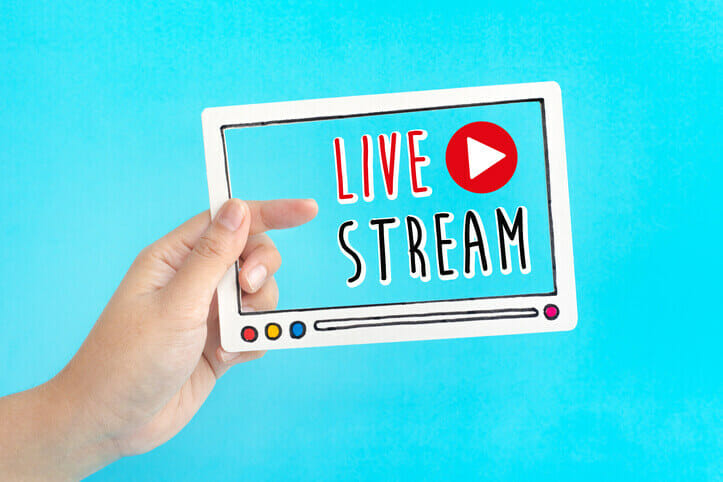
The Pros And Cons Of Live Streaming
Live Streaming
Live streaming keeps getting more and more popular on the internet. Viewers spend at least eight times more time watching live videos than videos on demand. A video, in general, is the type of content with the best ROI, according to more than half of marketers worldwide. But, is live streaming good for business? On this blog post, we will discuss some of the pros and cons of live streaming for marketing brands and businesses to help you can create the best strategy for your company.
The pros of Live Streaming videos
- They are profitable. Compared to other kinds of videos, live videos are a much less costly solution, eliminating the need to invest in production and editing. Furthermore, once the live video is finished, the recording stays on the platform, allowing you to download it, edit it and share it again and again.
- They are attractive. Live Streaming videos are one of the formats of content with most potential to seduce users, showing your brand ad transparent and authentic, with real live human beings behind it. This kind of content is fantastic to answer users’ questions, give them a sneak peak into what is coming, transmit the launch of a product, give demonstrations, and much more.
- They increase the quality of viewings. The first data on livestreaming shows that users spend three times longer watching live videos (compared to pre-recorded ones). If you want users to stick with you and listen, add them to your content marketing strategy!
The cons of Live Streaming videos
- They are unpredictable. We all know that the trouble with live anything is the unpredictability – technical difficulties, mess ups, cough attacks… anything that can go wrong, will go wrong. Take BuzzFeed for example, who had to cancel a live interview with Barack Obama on facebook (in the end their viewers had to watch it on Youtube). But don’t worry: with a good action plan, the probability of disaster decreases, and most people are more than understanding with these mistakes.
- They can be low quality. Most marketers are no experts in audiovisual production, meaning some live content can come out quite primitive in terms of image and sound quality. To get a good live transmission, you will need a fairly experienced team and a powerful internet connection. And, of course, never forget to leave plenty of time for light and angle checks before going on air.
- They can be misused. Livestreaming should be used to create and share content, not to robotically repeat the same sales message you have everywhere else. High quality content is what brings value to consumers and maintains a relationship with them, no matter what the format. If you want to be sure to get it right, my recommendation is to make a basic script or guidelines for each video, all the while leaving enough flexibility to improvise and interact with your digital audience.
Keep In Mind:
-
- Like recorded video, live-streaming videos cast a wide net. Your video could reach anyone anywhere in the world with an internet connection. Because there is no editing feature, there is no way to take back digital content – once something is said or done, it’s out there.
- How will you learn about the audience that saw your video? How did they interact with the video?
- What data will you collect? Instant sign-ons? Sharing the live video URL?
- What is your ROI? How do you measure the live video as a success for the time put in?
- Aside from awareness, it is unrealistic to expect a livestream video will deliver anything more than that.


